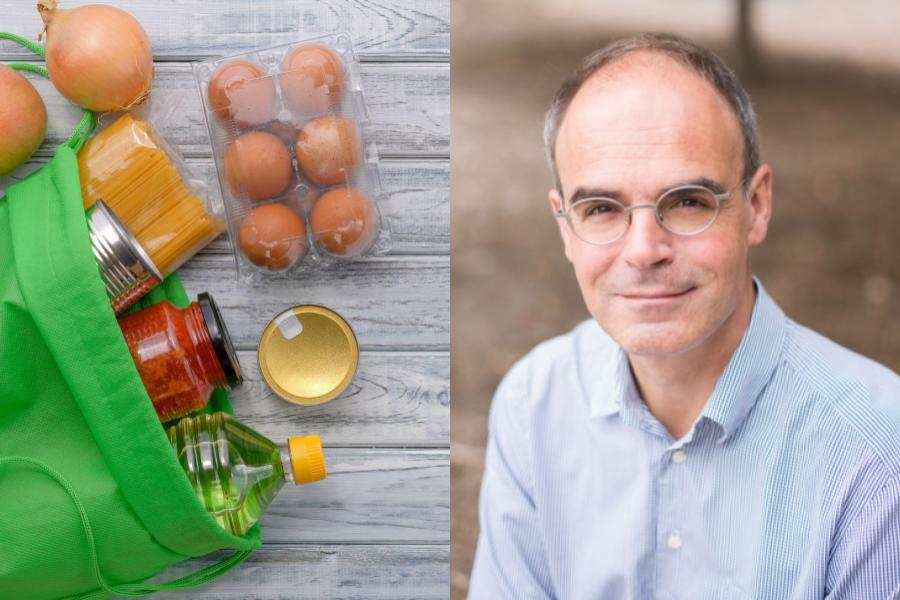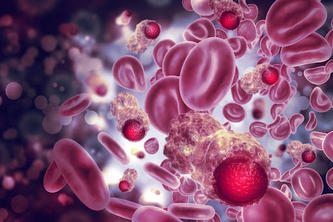
March is National Nutrition Month, an opportunity to focus on healthy and informed food choices.
When people try to eat healthier, they may start by cutting processed foods. But are all processed foods bad for you? Job Ubbink, a professor and head of the Food Science and Nutrition Department at the University of Minnesota, answers questions about the difference between unprocessed, processed, and ultra-processed foods and how to make nutritious choices.
Q: Can you explain the difference between unprocessed, processed, and ultra-processed foods?
Prof. Ubbink: Unprocessed foods are often also called minimally processed foods, as literally every food has seen some processing. Think of fresh or frozen fruits and vegetables, meat and seafood, pasteurized milk, dry beans and pulses, and whole grain flours. Processed foods are those that are prepared from unprocessed foods, often by using processed culinary ingredients, such as cooking oil, refined flour, sugar and butter. Processed foods include many of our daily foods, such as bread, cheese, yogurt, cured and processed meats, and many of the options in the deli department. Ultra-processed foods contain high amounts of sugar, salt and fat, count a lot of calories and are otherwise nutrient poor. They are also often very appealing and easy to eat, inviting overconsumption. Typical products are candy bars, frosted breakfast cereals, fast food, pastries and crispy snacks.
Q: Can processed foods offer unique nutritional benefits?
Prof. Ubbink: One of the main reasons we process foods is to increase shelf life. Think of the pasteurization of milk or the freezing or the canning of foods. Food processing can provide specific nutritional benefits. An example is lactose-free milk, which can accommodate those who are lactose intolerant. Lycopene, an antioxidant in tomatoes, is more bioavailable in tomato paste, and nixtamalized corn flour, which is traditionally prepared by the Native Americans by cooking corn in lye, has a much improved bioavailability of niacin, also known as vitamin B3.
Processing can also have negative effects. Refined, white flours, have a high glycemic index and lack important nutrients and fibers. Chemical hardening led to trans fats, which are unhealthy and should be avoided. Processing may also lead to loss of nutrients, even though we are getting better and better at preserving these. Think of frozen vegetables and fruits, which have a better nutrient retention than canned or, after prolonged storage, even fresh ones.
Q: What role do processed foods play in rural communities?
Prof. Ubbink: Rural communities traditionally prepared and preserved many of their foods themselves, often using their own produce. While there is a renewed interest in pickling, canning and fermenting foods, we now rely on grocery stores for the bulk of our supplies. Distances to grocery stores are large in rural areas, and inclement weather, such as blizzards, occasionally may prevent a trip to the store. So, many in rural areas stock up on shelf-stable processed foods in their pantry and freezer. A concern are so-called food deserts: In very remote and often poor areas, a convenience store may be the only place that is relatively nearby that sells food, leading to an overreliance on ultra-processed and fast food.
Q: What advice would you offer for helping consumers make informed decisions at the grocery store?
Prof. Ubbink: Purchase fresh and minimally processed foods first: veggies, fruits and a protein source. Go with the seasons — buy cabbage or root vegetables instead of leafy greens in winter. Processed foods are needed in a modern lifestyle, but look at the nutrition facts panel on the backside of the packaging, and avoid those that are high in added sugar, salt and saturated fats. Limit purchasing ultra-processed foods — this can be challenging, as they can be really tempting and convenient. Stick to your shopping list and don’t go to the grocery store on an empty stomach!
Q: How are University of Minnesota researchers working to better understand and utilize processed foods?
Prof. Ubbink: We are looking specifically at the group of ultra-processed foods. This food category was introduced about 15 years ago by researchers from Brazil, and has started an important global debate about the role of industrially-formulated foods in the obesity pandemic. Now, while the concept in itself is useful, it is also flawed. For many of the ultra-processed foods, it is not so much that they are intensely processed, but rather that they are formulated to contain high levels of sugar, salt and fats, are high in energy and have little nutritional value. We explicitly recognize this by differentiating the processing from the formulation. This allows to better define ultra-processed foods, and can for instance be used in defining nutrition research. It also shifts the focus from processing, which is critical to our food supply, to the way industry makes choices on the formulation of foods. This may also provide a route to more wholesome foods — there is no reason that formulated foods cannot be healthy.
Job Ubbink is a professor and head of the Food Science and Nutrition Department at the University of Minnesota. His areas of expertise include food customs and culture and innovation in the food industry.
About the College of Food, Agricultural and Natural Resource Sciences
The University of Minnesota’s College of Food, Agricultural and Natural Resource Sciences (CFANS) strives to inspire minds, nourish people, and sustainably enhance the natural environment. CFANS has a legacy of innovation, bringing discoveries to life through science and educating the next generation of leaders. Every day, students, faculty, and researchers use science to address the grand challenges of the world today and in the future. CFANS offers an unparalleled expanse of experiential learning opportunities for students and the community, with 12 academic departments, 10 research and outreach centers across the state, the Minnesota Landscape Arboretum, the Bell Museum of Natural History, and dozens of interdisciplinary centers. Learn more at cfans.umn.edu.
About “Talking...with U of M”
“Talking...with U of M” is a resource whereby University of Minnesota faculty answer questions on current and other topics of general interest. Feel free to republish this content. If you would like to schedule an interview with the faculty member or have topics you’d like the University of Minnesota to explore for future “Talking...with U of M,” please contact University Public Relations at [email protected].




